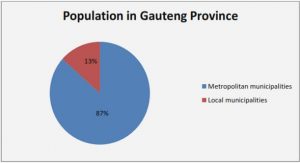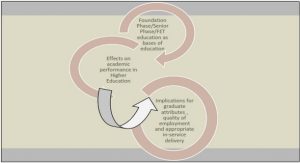Get Complete Project Material File(s) Now! »
Definition and Terms
Murphy’s comment (1981:155) that’ a,nother feature is the an thesis (my emphasis) whi extend throughout the work’, points to the that chiasms in can so be described as antitheses, and that the can characteristic of a whole book. Welch (Greinadus 1988:209) agrees, remarking that chiasm is I a signi cant ordering principle within, not only verses sentences, but also within and throughout whole books. ‘ Loader (1977:95) defines structure as ‘the way in which the various copes within themselves are up as we~l as the arrangements of these larger in composition of the book as a whole. ‘ Radday (1 3: 7) in discussing the structure of the Jonah narrative remarks: ‘It must be admitted that the sywmetry the two parts is paral~el and not in reverse, i.e. not chiastic.’ From s comment it can be inferred that important to concept of chiasm is element of reversal. According Fox (1991: 158) , t] the most important theme in Esther, the one that organises much of the presentation wording of events ….is peripety: the result of an action is actually the reverse of what was expected’ (see so Goldman 1990:21). Hence our somewhat tautological term ‘chiastic-reversal’ as the principle governing the structure of Esther narrative. Earlier Radday remarks (1973: 6) ‘that the Biblical authors placed, according to the tic structure in vogue at the t , the idea of each work, its thesis or turning point at the centre of the work …. ‘
With reference to the idea of chiastic-reversal, in which the characters of a narrative are an important factor, Bensusan ( 988:71) says it is: ‘a stylistic device expressing a contrast or reversal of a role or situation.’ He inues to say that chiasmus is ‘usually associated wi individuals and groups of people. Whi events can be contrasted or run parallel can concealed, it is only people’s roles which can reversed (emphasis mine). Book of Esther includes many instances of chiasmus or contrast associated with individuals …. ‘ In discussing the structure of Ruth, Radday (1 3:8) says ‘[t]he dramatis themselves are ———-~——-chiastically distributed.’ s is especially true of Esther.
The fall of Haman the Agatite 5:1-7:10
This section of the narrative is a unit because it deals with the fall of Haman Fuerst ~975: 69; McCarthy and Riley 1986:95). In this regard Bush (1996:420-421) comments: ‘[t]he conclusion to scene three skilfully resumes the previous act, dramatically broken off in mid-course, as Esther’s invitation to Haman and the king to « come tomorrow to the banquet which I shall prepare » (5:8) becomes « the king’s eunuchs brought Haman to the banquet Esther had prepared » (6:14). It makes a smooth transition to the next , for the prediction of Haman’s wife and his friends that his downfall is utterly certain is still hanging in the air …. ‘ Concurring Davis (1995:248,254) writes: ‘for the author organises the passages to highlight what is the beginning of the end of Haman.’ His fall takes place in four stages: 5:1-8; 5:9-14, 6:1-12 and 6:13-7:10 (cL also Haupt 1907-8:145; Bush 1996:412; Fox 1991:73-82, and the occurrence of y~n in 5:14 and 7:9-10). We now give an overview of the four stages before a detailed discussion of each. ‘:’he tide turns for the Jews in 5:1-8, when Esther decides to act. She ventures into the vicinity of the king’s throne-room, a very dangerous act (Fox 1991:62). Ahasuerus, who is seated on his throne at the time, notices her, holds out the golden sceptre and Esther enters the inner court. Esther survives the traditional law of the king (cf.4:11). This incident begins the process of the fall of Haman. It sets in motion a series of events which brings about the end of Haman.
In 5: 9-14 he loses the battle against the internal struggle with his obsessive hatred of Mordecai and
the Jews. For a while it looks as if he would be able to control himself, 5:9-10a; but when he arrives home he loses the self-control he achieved earl ,as can be seen from his acceptance advice given by his wife and friends, viz. hang Mordecai, a continuation of his 1. In 6: 1-12 he suffers public humiliation s he is instructed to dress his arch-enemy royal regalia, and parade him the town square, declaring: this is what is done to the man the king desires to honour. It must be noted that 6:1-12 is not the promotion of Mordecai. If it had been the case it would have been a great tragedy the Jews as Mordecai is returned to the gate, 6: 12, leaving the Jews in no better position, since the decree authorising their destruction still hung over their heads. No, the main point of this passage is not the promotion of Mordecai but the humiliation of Haman. The victory this gives Mordecai over Haman is of secondary importance. Implicit in this humiliation of Haman is the reversal of Mordecai’s position from one of a threat of death (5:14) to one of honour (6:1011). Haman’s humiliation symbolises his fall.
1. Chapter One:
1.1 Statement of problem and Hy~othesis
1.2 Objectives of the research
1.3 Method of research
1.4 Procedure
2. Chapter Two: Overview of Literature
3. Chapter Three: Models used in the Analysis of the Esther narrative
3.1 Introduction
3.2 Sy~metrical Model
3.3 Chain Model
4 . Chapter Four: Analysis of Esther Narrative
4.1 The Cyclical Model
4.2 Structural Anaysis 1:1-2:20
4.3 Structural Analys 2:21-8:17
4.4 Structural Analysis 9:1-10;3
5. Chapter Five: The Role of the King
5.1 Introduction
5.2 The role of the king in 1:1 :20
5.3 The role of the king in 2:21 8:17
5.4 The role of the king in 9:1-10:3
6. Chapter Six: The portrayal of the king
6. 1 Introduction
6.2 Characterisation in Narratology
6.3 Evaluating past charatcterisations of the king
6.4 Characterisation of King Ahasuerus in Esther
6.5 The portrayal of the king in 1:1-2:20
6.5 The portrayal of the king in 2:21-8:17
6.6 The portrayal of the king in 9:1-10:3
7. Conclusion and Summary
8. Bibliography
9. Abstract






